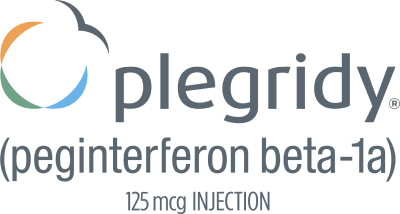PLEGRIDY adverse reactions1
Setting patient expectations about common side effects and equipping patients with strategies to manage these side effects can help prepare them for treatment.
The most common adverse reactions reported in year 1 of ADVANCE, in which patients with relapsing MS received PLEGRIDY or placebo by subcutaneous (SC) injection, were injection site reactions (ISRs) and flu-like symptoms (FLS).1
Adverse reactions with an incidence 2% higher for PLEGRIDY SC than for placebo in ADVANCE (year 1)
Adverse reaction |
PLEGRIDY n=512 |
Placebo n=500 |
Nervous System Disorders |
||
Headache |
44 |
33 |
Gastrointestinal Disorders |
||
Nausea |
9 |
6 |
Vomiting |
5 |
2 |
Musculoskeletal and Connective Tissue Disorders |
||
Myalgia |
19 |
6 |
Arthralgia |
11 |
7 |
General Disorders and Administration Site Conditions |
||
Injection site erythema |
62 |
7 |
Influenza like illness |
47 |
13 |
Pyrexia |
45 |
15 |
Chills |
17 |
5 |
Injection site pain |
15 |
3 |
Asthenia |
13 |
8 |
Injection site pruritis |
13 |
1 |
Hyperthermia |
4 |
1 |
Pain |
5 |
3 |
Injection site edema |
3 |
0 |
Injection site warmth |
3 |
0 |
Injection site hematoma |
3 |
1 |
Injection site rash |
2 |
0 |
Investigations |
||
Body temperature increased |
6 |
3 |
Alanine aminotransferase increased |
6 |
3 |
Aspartate aminotransferase increased |
4 |
2 |
Gamma-glutamyl-transferase increased |
3 |
1 |
Skin and Subcutaneous Tissue Disorder |
||
Pruritis |
4 |
1 |
Incidence and tolerability of FLS
- In ADVANCE, the incidence of FLS was 47% in the PLEGRIDY group and 13% in the placebo group
- Fewer than 1% of patients discontinued PLEGRIDY due to FLS
Most common adverse reactions with PLEGRIDY SC and PLEGRIDY IM in bioequivalence study1
Comparison between SC and IM administration
An open-label, crossover study analyzed findings from 130 healthy volunteers to assess the bioequivalence of single doses of 125 mcg of PLEGRIDY administered as an SC and intramuscular (IM) injection.
The pharmacokinetics of 125 mcg single dose of PLEGRIDY administered subcutaneously and intramuscularly were similar.
Safety results below, from the bioequivalence study, showed a lower frequency of ISRs with PLEGRIDY IM versus PLEGRIDY SC.
55% relative reduction in ISRs
- Overall, ISRs (eg, injection site erythema, pain, pruritus, or edema) were reported with a lower frequency in intramuscular (14%) compared to subcutaneous (32%) administration
